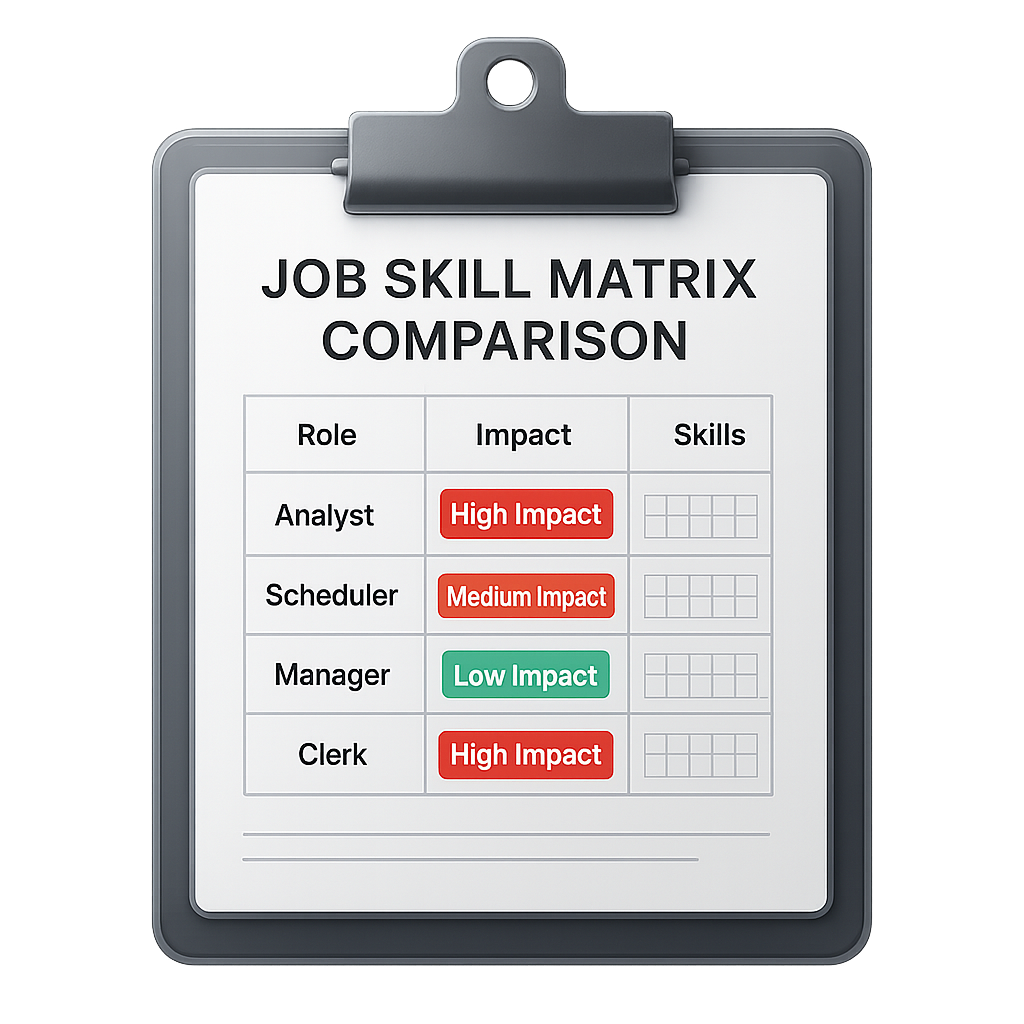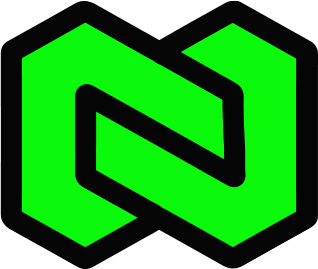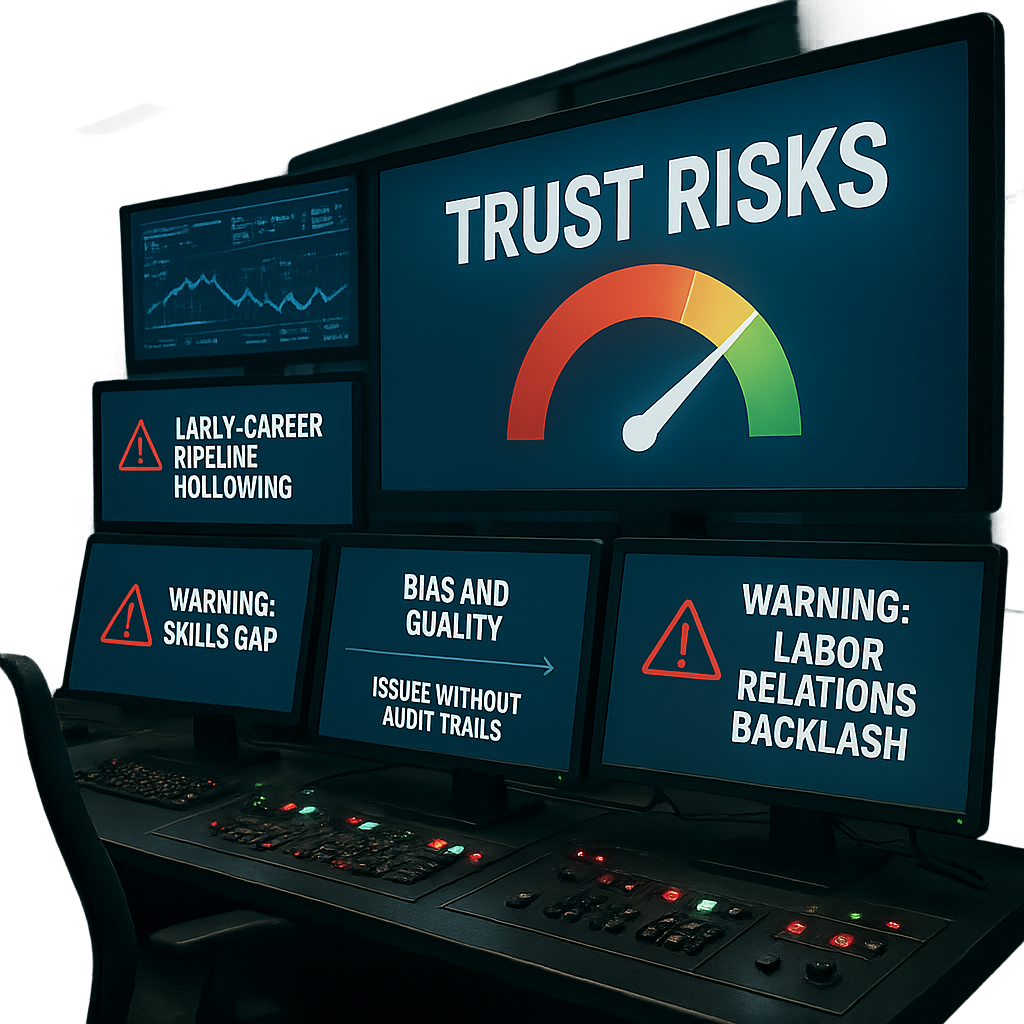AI is now baked into daily work across Fortune 500 companies. You see it in leaner hiring, in faster reports, in tasks that used to take hours but now take minutes. For HR leaders, the question is clear: which jobs are shifting; how fast; and what do you do about it?
AI is already shifting daily work. You can see it in leaner hiring pipelines (LinkedIn Economic Graph), in reports that used to take days but now generate in minutes (McKinsey), and in jobs where 60% of tasks could be automated by 2030 (National University).
As an HR leader, you want to know which roles are changing; how fast; and what should you do about it?
Here’s the map: where automation bites first; which roles are getting augmented; the new jobs already showing up; and the near-term moves to keep your workforce confident. AI is reshaping tasks across the org; your job architecture and skills plan need a refresh.
A quick map of impact types
Automated
High-volume; repeatable; rules-based
Augmented
Research; drafting; analysis; copilots lift throughput
Redesigned
Roles split or recomposed around human + AI workflows
New roles
Governance; AI product ownership; data and ML operations
Where automation hits first: Clerical and admin
Clerical and admin staff are in the crosshairs. Data entry; AP/AR clerks; schedulers; travel and expense admins. AI now books the meeting, files the claim, and drafts the routine note. Humans step in when something breaks pattern.
HR watchouts: headcount pressure; reskill admin teams toward workflow ownership; make sure leaders back the shift.
[WEF job declines]


Entry-level white-collar work: The quiet squeeze
The early career ladder is wobbling. You can already see it in fewer internships, smaller analyst classes, and tighter junior hiring.
AI now produces the first draft of a market study or contract review. Juniors move to judgment tasks sooner. That can build skill fast; but it also shrinks the number of real “starter” roles. Unless you redesign early-career paths, you risk a clarity gap where new talent can’t see how to grow inside the org.
[Guardian / Anthropic CEO] [WEF/Bloomberg automation] [LinkedIn hiring trends]
Mid-to-high-skill roles: Still standing, just remixed
Finance & Accounting: invoice processing and reconciliations automated (Thomson Reuters); analysts focus on interpretation.
Sales: sales reps lead the pack in AI adoption (Microsoft Work Trend); AI preps leads and drafts outreach so reps spend more time with customers.
Marketing: generative tools draft copy and segment audiences (LearningBank); humans steer narrative and brand.
Support: a field trial at a Fortune 500 software company found AI boosted agent productivity 14% overall (Stanford/MIT RCT).
IT/Engineering: GitHub Copilot and similar tools now generate significant portions of boilerplate code (McKinsey).
Legal & Compliance: contract review and legal research are ripe for AI augmentation (Goldman Sachs).
Ops/Manufacturing: predictive maintenance, vision QA, and autonomous handling are already rolling out (World Economic Forum).
New roles already emerging
The World Economic Forum projects 40% growth in demand for AI and machine learning specialists by 2027 (WEF).
Companies are hiring AI Product Owners, AI Governance Leads, Model Risk Officers, Data Curators, ML Ops engineers, and Prompt Designers (Innopharma Education).

Your next 90 days: Articulate which roles will be impacted
Download our Job skill matrix comparison tool and get a sense of which roles at your company will be impacted by AI


